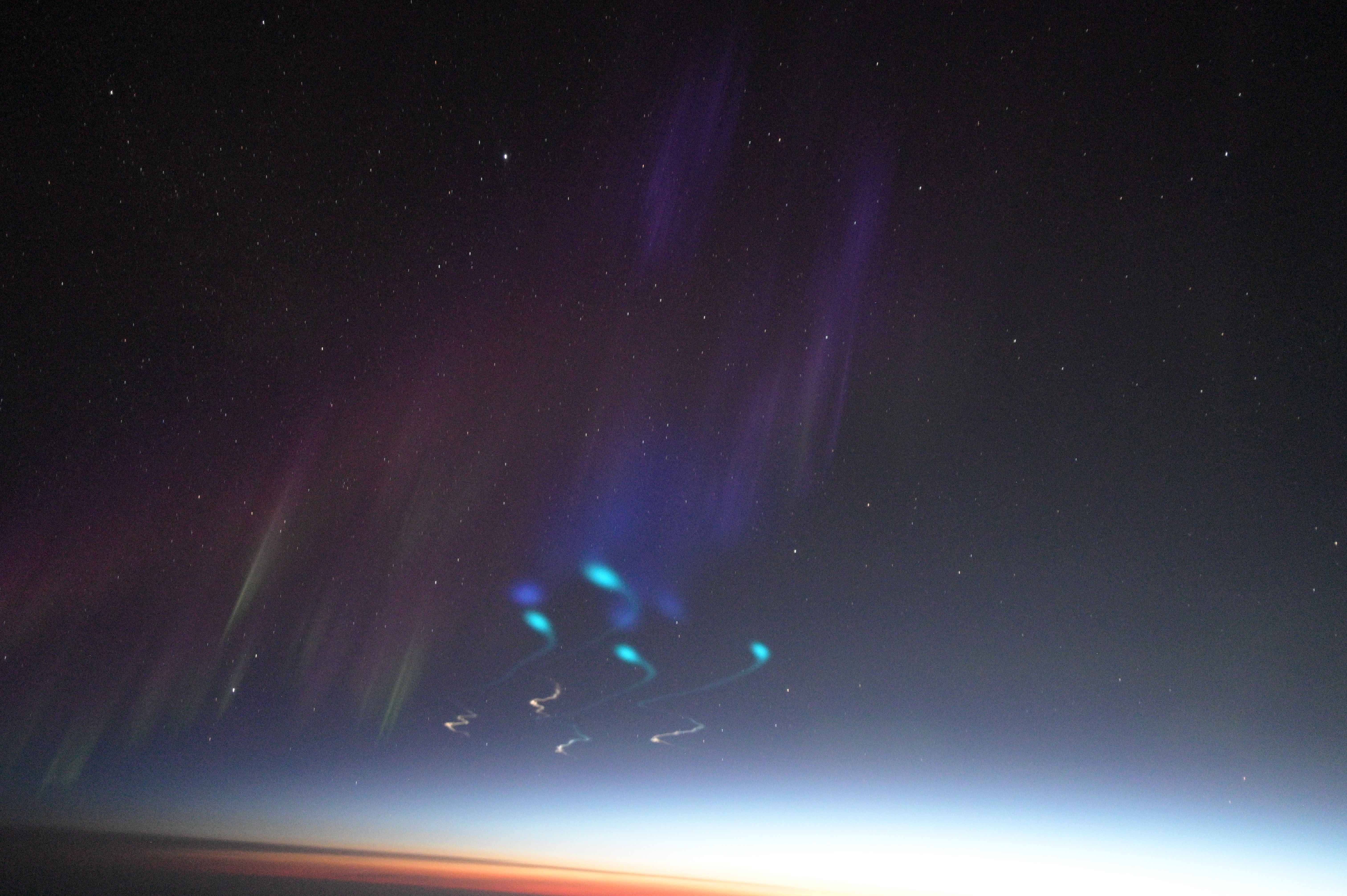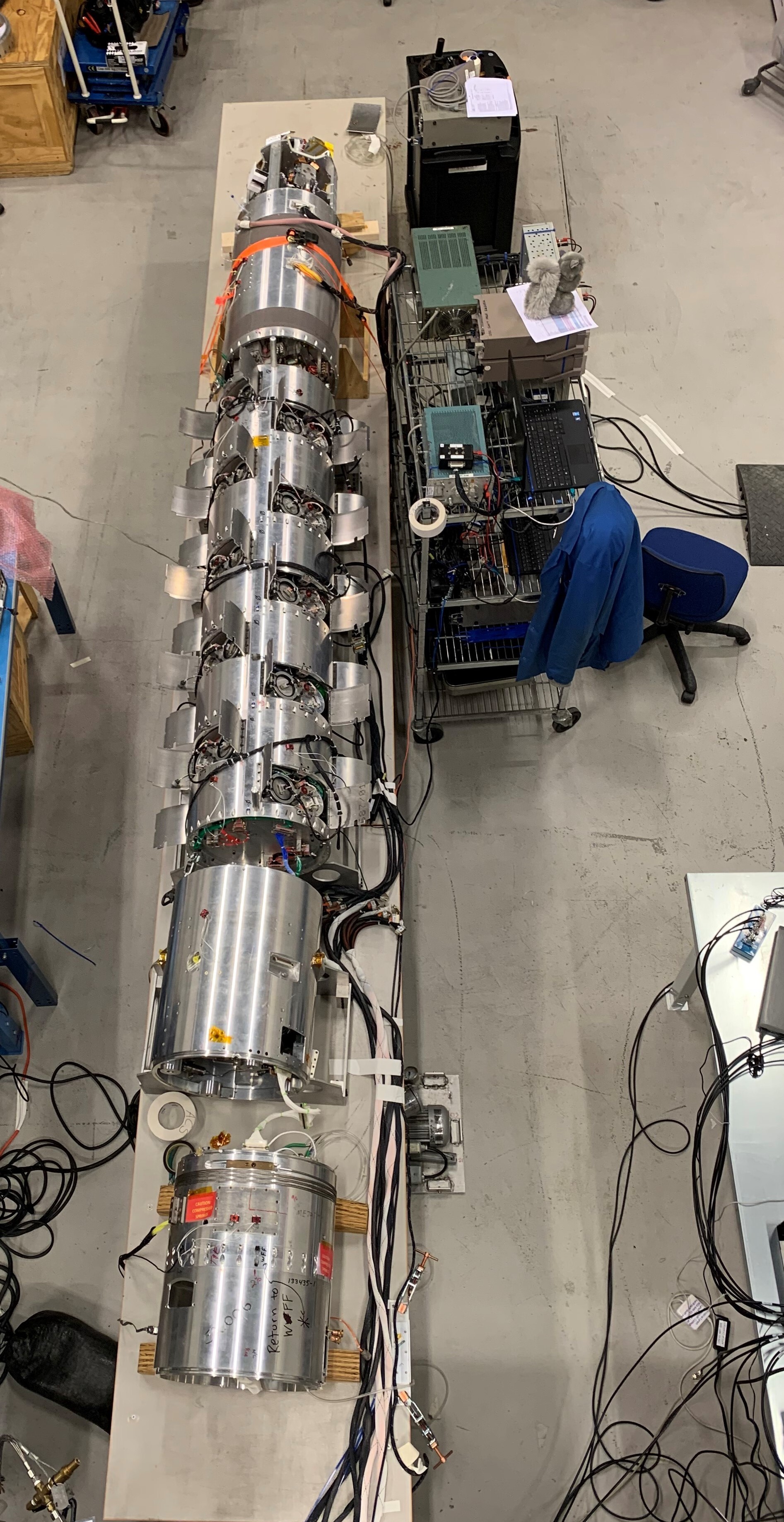Rocket flies high over Norway in UAF scientist’s atmosphere experiment
Rod Boyce
907-474-7185
Dec. 1, 2021
A NASA sounding rocket soared high from a launchpad in Norway on Wednesday morning in a decades-old quest to understand the cause of a persistent dense patch of upper atmosphere on Earth’s sun-facing side.
The Cusp Region Experiment-2, or C-REX-2, is headed by space physicist Mark Conde of the University of Alaska Fairbanks Geophysical Institute and funded by NASA. The four-stage rocket launched from Andøya Space Center on Norway’s far northern coast.
“We have been waiting more than two years to launch this payload, and the space weather conditions that we experienced today were ideal,” Conde said. “Preliminary assessments indicate that all aspects of the rocket, its payload and the supporting observatories worked as intended. We had not dared to hope for such perfect alignment of conditions, and certainly not on the first day of our launch window.”

Clouds of vapor traces caused by chemical releases from the rocket form a grid pattern to show the movement of the wind in the upper atmosphere. The photograph was made from a NASA aircraft off the northeast coast of Greenland.
What has puzzled scientists is this: The oval-shaped area of denser atmosphere at around 250 miles altitude shouldn’t exist without corresponding changes to wind, temperature or ion motion to support the extra mass. More than a decade of study hasn’t found any of those changes.
“There's only two possibilities, really,” Conde said from Norway prior to the launch. “It will either involve significant changes to the wind or significant changes to the electrodynamic environment — the way the ionosphere interacts with the atmosphere. The whole purpose of this experiment is to look for the expected signatures of disturbed winds and of disturbance in the ionosphere.”
Understanding the cause of the density increase and discovering the related atmospheric actions is important, for example, in making corrections to satellite orbits. Operators of the numerous satellites circling Earth constantly have to consider adjusting orbits to avoid collisions with orbital debris. Improved understanding of the atmosphere’s behavior can improve certainty in orbit calculations and, ultimately, save fuel by reducing the number of times a satellite’s motors must be fired.
Research has shown that the areas of unexplained density occur near Earth’s magnetic field cusp regions, the funnel-shaped “holes” in the magnetic shield that protects Earth’s atmosphere from the solar wind. These funnels reach down into the atmosphere on Earth’s sunlit side, at latitudes between 70 and 80 degrees in both northern and southern hemispheres.
The oval-shaped density changes occur persistently at altitudes above 250 miles but only on the planet’s sun-facing side. They represent an increase in mass density of 30% to 100% above that of the ambient atmosphere.

The vapor tracer ampule doors are open on the CREX-2 payload during testing at the Andøya Space Center. Photo courtesy ofNASA
But what supports this extra mass in both the northern and southern hemispheres? Heavier material, including air, is supposed to sink unless offset by a corresponding force.
“You can't just add that extra mass and do nothing else. Something in the system has to change in order to hold it up,” Conde said. “People have observed this extra mass with spacecraft, but nobody has seen any other corresponding perturbations in this region.
“The only clue that we have is a crazy electric current signature that goes along with it, but we don't exactly understand how the presence of those field-aligned currents leads to the support mechanism that enables this thing to exist,” he said. “But surely it must be part of the story.”
C-REX-2 measured wind and ion speed to about 250 miles altitude in the search for answers. Now comes the data analysis, which will take months. The experiment team is confident the data will significantly advance understanding of this puzzle.
UAF led the experiment, which involved a large team of scientists, engineers and students from several countries. UAF personnel include graduate student Jason Ahrns, who photographed the experiment from aboard a NASA Gulfstream 4 that flew from Iceland, and UAF graduate student Matthew Blandin, who photographed the experiment from Ny-Ålesund, a small community on Norway’s Svalbard archipelago.
Geophysical Institute research faculty member Don Hampton was in Longyearbyen on Svalbard to photograph the experiment. UAF graduate student Cameron Westerlund was stationed at the launch site and tasked with monitoring the health of the payload instruments.
“To see in a very direct way the things we talk about in class and learn in a formal academic setting, to see it play out in real time out in the field is kind of an experience that really I didn’t expect to have,” said Westerlund, who was assigned to the telemetry room and had the authority to scrub the launch if readings didn’t look right. “But all of a sudden it’s happening, and it’s really something else.”
The experiment also included researchers and equipment from the University of Calgary in Canada, University of New Hampshire, Dartmouth College, Clemson University, University College London and Hokkaido Information University in Japan, along with personnel from NASA, NASA contractors and Andoya Space in Norway.
C-REX-2 is the last of nine launches in an international research effort known as the Grand Challenge-Cusp, which explored several aspects related to the northern cusp region. The launch of C-REX-2 had been scheduled for 2019 but was canceled due to inadequate levels of solar activity.
Other nations that have launched experiments in the coordinated cusp research effort include England, Norway, Canada and Japan. All of the launches have occurred from either the island of Andoya in Norway or Ny-Ålesund on Svalbard, with ground and airborne observations made from many locations in the Scandinavian Arctic.
ADDITIONAL CONTACT: Mark Conde, 907- 474-7741, mgconde@alaska.edu.
NOTE TO EDITORS: Photographs are available at the Geophysical Institute news website.
070-22


